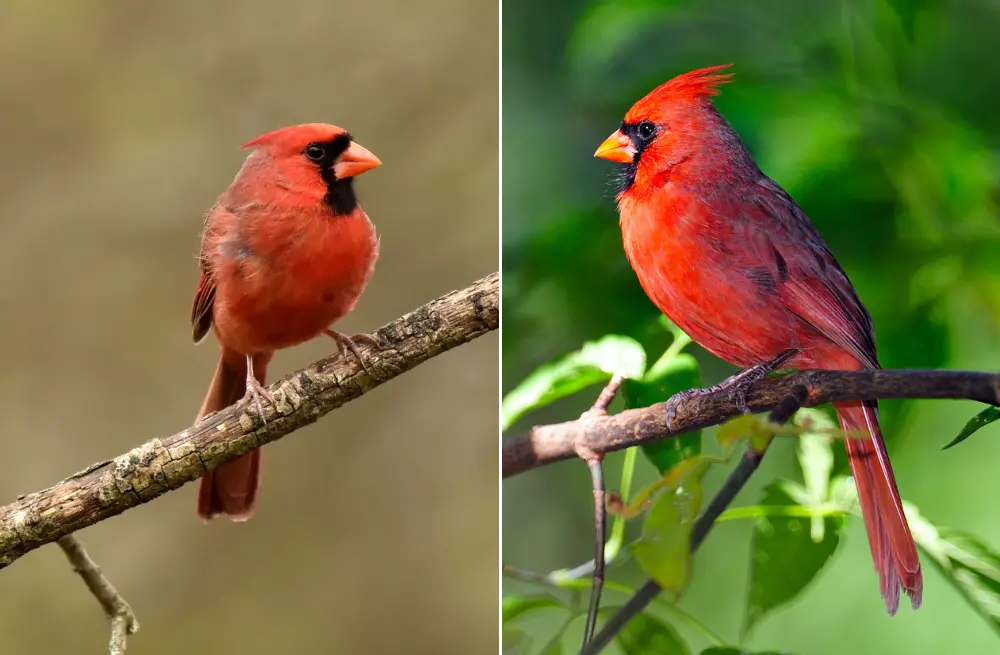Cardinals, with their vibrant plumage and cheerful songs, are a delightful sight for many bird enthusiasts. These birds are not only beautiful but are also quite amenable to human-made habitats, including gardens and backyards.
One common question from bird lovers and homeowners is: Do cardinals visit bird feeders? And if so, what food do they prefer? Let’s explore the answers to these questions.
Cardinals and Bird Feeders
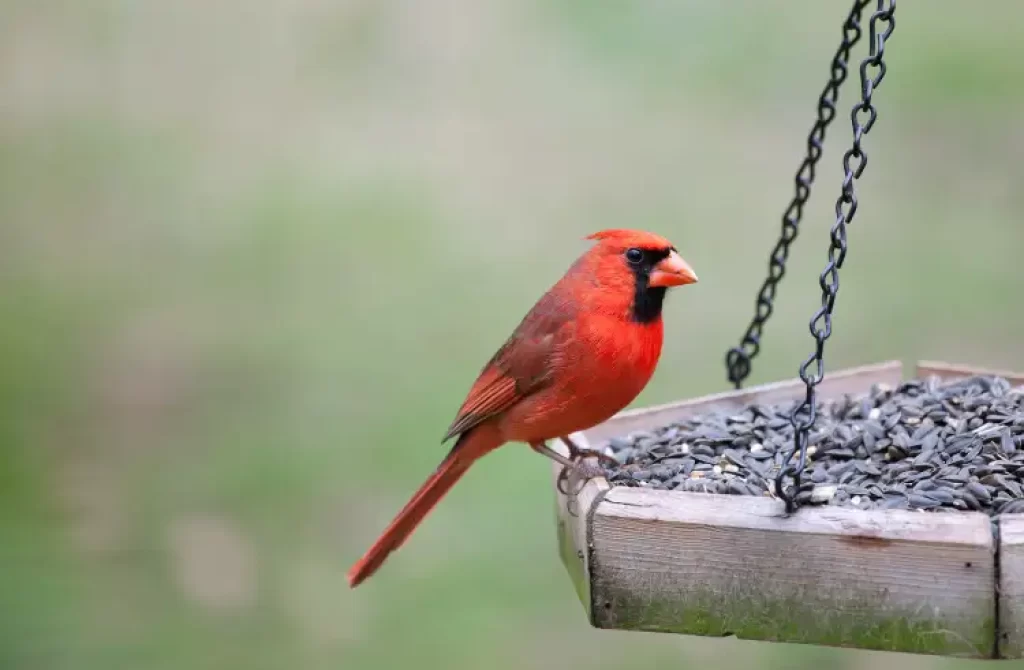
Yes, cardinals are indeed known to frequent bird feeders. If you live within the cardinal’s range, which covers much of the eastern, southeastern, and central parts of the United States, you have a good chance of attracting them to your backyard. These birds are particularly active during early morning and evening, making these times ideal for birdwatching.
What food do cardinals like the most?
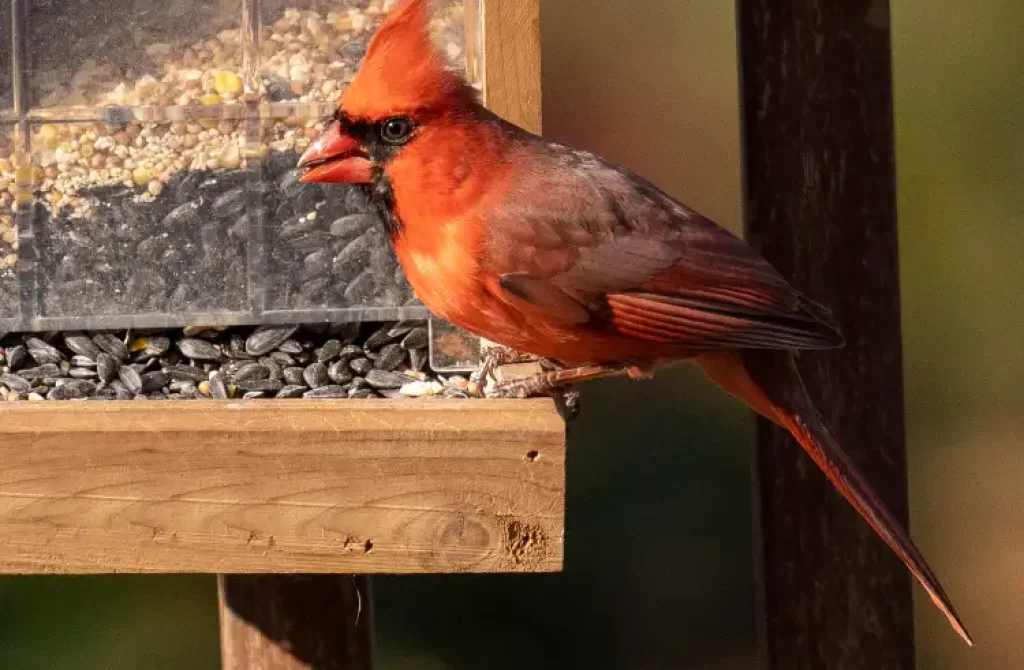
Cardinals are primarily granivorous, meaning that seeds make up a significant portion of their diet. However, they are not very picky and will consume a variety of foods. Here are some of their favorites:
Sunflower Seeds
Sunflower seeds, particularly the black oil and striped varieties, are cardinal delicacies. The black oil variety, characterized by its thinner shell and greater oil content, is nutritionally rich and offers the birds a high-energy, fat-dense food source, indispensable for thermoregulation during the chilly seasons.
Safflower Seeds
Renowned in avian circles for their peculiar ability to deter many non-target birds and even squirrels, safflower seeds present a two-fold advantage: they beckon cardinals while ensuring a less crowded feeding scene. This selectivity stems from the seed’s distinct taste and harder shell, disliked by many feeder visitors.
Cracked Corn
A versatile grain, cracked corn is an accepted part of a cardinal’s diet. Its palatability and digestibility, when broken down, make it an attractive food item. Whether strewn on the ground to simulate natural foraging or presented on elevated platform feeders, it provides variety to their seed-centric diet.
Peanuts
A nutritional powerhouse, peanuts, when served raw and unsalted, introduce an essential mix of fats, proteins, and vitamins into the cardinal’s diet. Though not their primary sustenance, when chopped or offered in halves, they can be an enticing treat, offering both energy and variety.
Fruits and Berries
Diversifying a cardinal’s dietary intake, fruits such as grapes and apples, and berries like mulberries, are a seasonal treat. These natural sugars and fibrous sources introduce antioxidants and vital micronutrients, enhancing the bird’s overall health and vitality.
Mealworms
Though seeds predominantly constitute a cardinal’s diet, protein is crucial during specific life stages, like breeding. Mealworms, brimming with essential proteins and amino acids, cater to this need, supporting chick development and parental stamina during the demanding nesting season.
Do cardinals feed other birds?
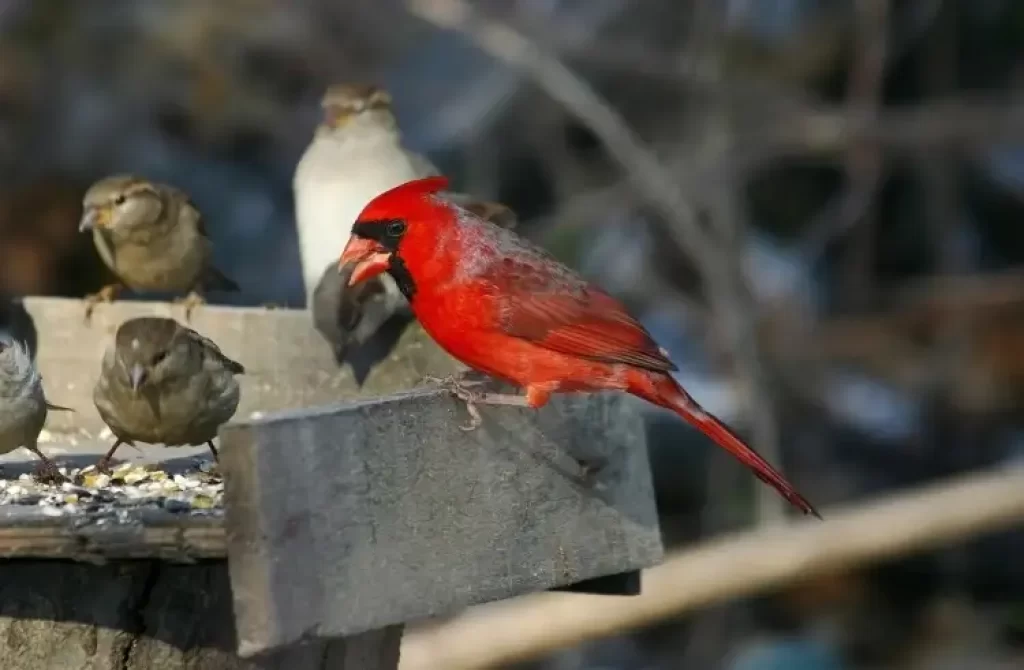
Yes, cardinals have been observed engaging in a behavior known as “allofeeding” or “alimentary altruism.” This is where one bird feeds another bird that is not its offspring. The most common scenario in which this behavior is observed among cardinals is between mated pairs.
During the courtship and breeding season, the male cardinal often feeds the female as part of their bonding ritual. This act serves both as a display of his ability to provide and as an affectionate gesture between the pair.
While the behavior is most frequently seen between mated pairs, there are occasional reports of cardinals feeding other birds of different species.
However, this is less common and not as well-documented as the courtship feeding. The reasons for such interspecies feeding are not entirely clear, but it may occur due to mistaken identity or other unique circumstances.
In any case, while cardinals do engage in feeding behaviors with other birds, it’s essential to note that the primary instances of this are within the context of mating and bonding rituals between pairs.
You might also like: Where Do Cardinals Nest at Night?
Tips for Attracting Cardinals to your yard
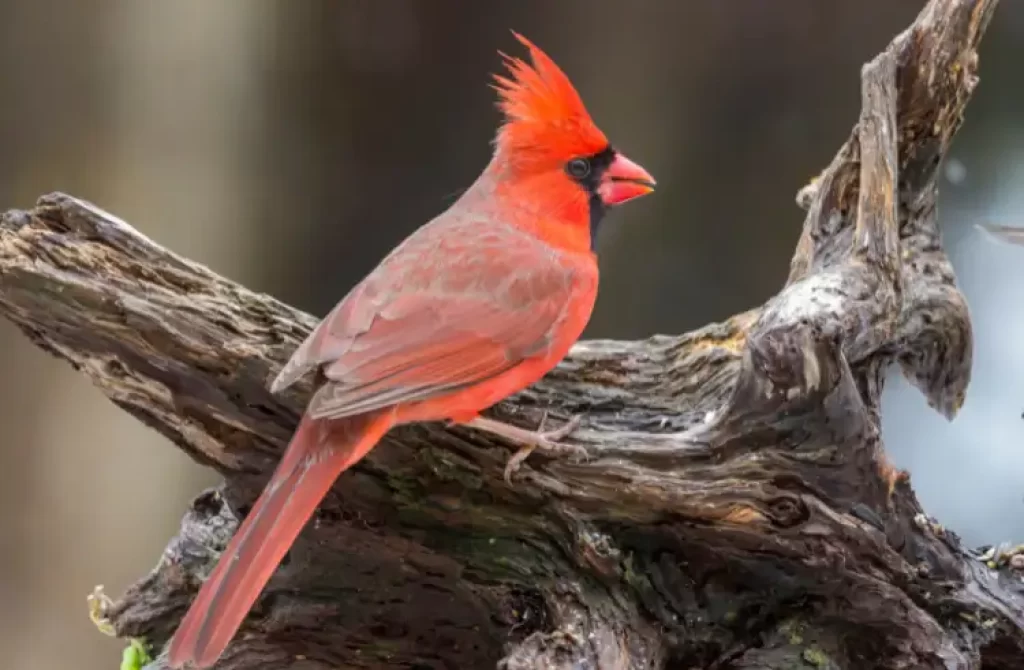
Feeder Type – Consider Their Preferences
When choosing a feeder for these vividly colored songbirds, it’s vital to understand their preferences. Cardinals are particularly fond of platform feeders, valuing the spaciousness and stability they provide. These birds cherish a solid footing, making large perches another favored choice.
While you may occasionally spot them on hanging feeders, especially if the pickings are slim elsewhere, their true comfort lies in flatter, more stable surfaces.
Location – The Art of Strategic Positioning
The environment around the feeder is just as crucial as the feeder itself. Situating your feeders proximate to thickets, shrubberies, or trees offers cardinals a tactical advantage.
These locations not only provide them with a natural, familiar ambiance but also allow a hasty retreat to dense, protective foliage when threats loom. Remember, the safety of their dining experience significantly influences their choice to return.
Water Source – The Allure of Liquid Refreshment
Just as with humans, access to clean water is essential for birds. Introducing a birdbath or another shallow water source can serve as a cardinal magnet.
These birds, like many others, require water for drinking and occasional bathing. Offering them a serene spot to quench their thirst or indulge in a refreshing splash can make your backyard their favored haunt.
Consistency – The Key to Their Hearts (and Stomachs)
Regularity in feeding cannot be stressed enough, especially when dealing with wild birds. By maintaining a consistent supply of their favorite seeds and foods, particularly during the harsh winter months when resources are scarce, you cement your yard’s reputation as a reliable food haven.
This steady provision ensures that the cardinals, with their sharp memories, recognize and continually revisit your hospitable space.
Conclusion
Cardinals are charming regulars at bird feeders, drawn to their favorite sunflower seeds and safflower seeds. Watching these beautiful birds visit your feeder can be a real delight. So, fill up your feeder with their preferred snacks, sit back, and enjoy the show right in your own backyard.
If you’re eager to dive deeper into the world of cardinals and bird feeding, feel free to explore our website for more helpful tips and birdwatching pleasures. Happy birdwatching!
Kenno Marques is a self-taught English speaker deeply passionate about nature and wildlife. He dedicates his time to scouring the web for the latest animal news and engaging content, which he shares on various websites. Fluent in three languages, Kenno is currently on a journey to master German. His commitment to fostering an understanding of the natural world makes him a valuable contributor to the online community.

